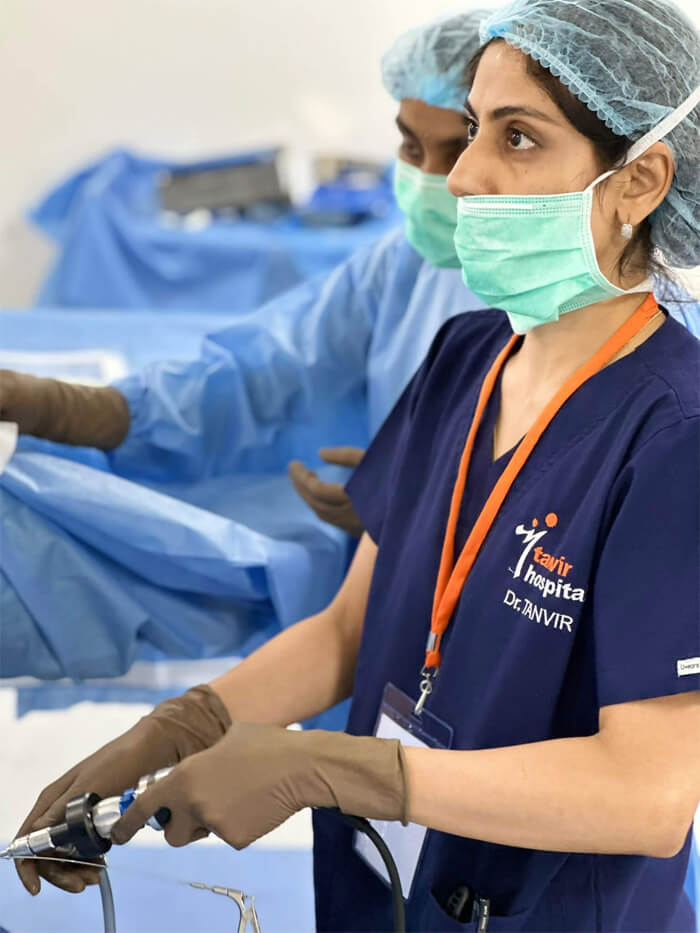
What is Office Hysteroscopy?
Office hysteroscopy is a minimally invasive procedure that allows to look inside the womb (uterus) for diagnostic and operative purposes in office. The method involves the use of a slender telescope equipped with a light and camera, known as a hysteroscope, to examine the cervix and the interior of the uterus.What sets this proce dure apart is its convenience and efficiency—it can be performed in the doctor’s office (OPD) without the need for general anesthesia or a hospital stay. Dr. Tanvir Singh has mastered this technique, providing patients with a comfortable and reassuring experience while addressing their gynecological concerns.
How does a patient prepare for the office hysteroscopy?
The journey of office hysteroscopy patient begins with a simple outpatient visit to Dr. Tanvir Singh’s clinic. Patients can expect a hassle-free experience, as the procedure is performed in the comfort of the opd. Patient and attender can be part of the procedure. It is usually done without anaesthesia and takes about 30 minutes. Patient need not be fasting for the procedure unless specified by the doctor.

